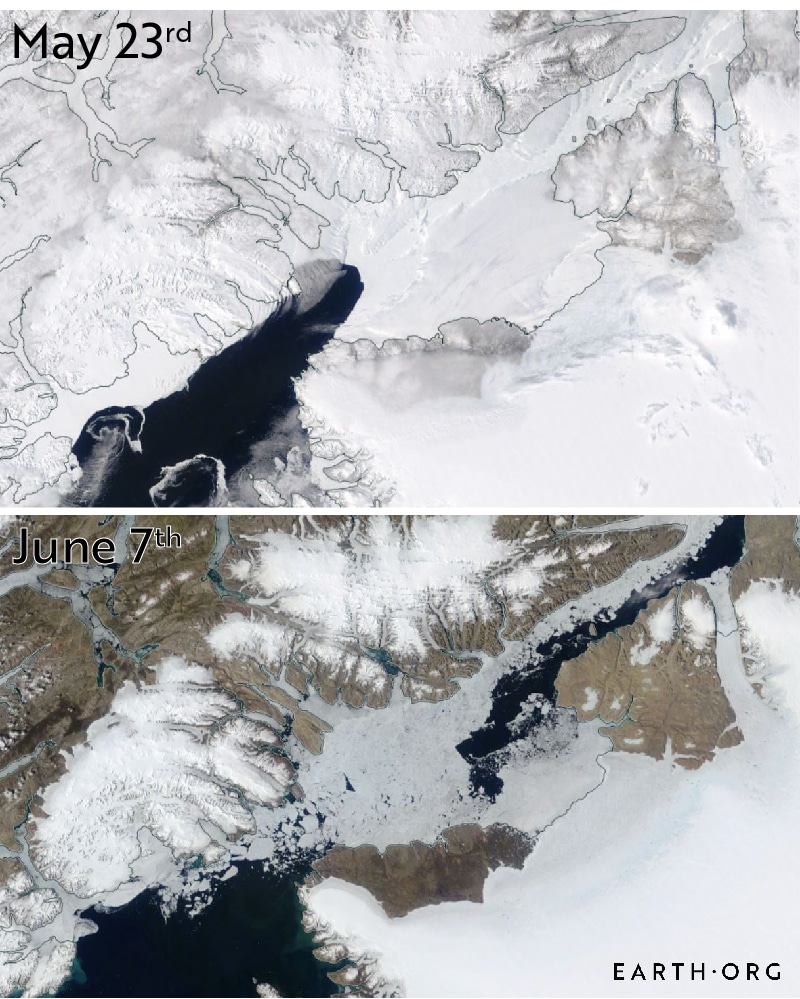Arctic sea ice is disappearing fast, as it grows thinner, more fragile, and outflow increases out of a number of narrow straits. One of these, the Nares Strait, has seen a decrease in the stability of vital ice arches that wall off the passage of ice in winter.
—
Between Greenland and the northernmost reaches of Canada is a 35 kilometer wide channel called the Nares Strait, after the British naval officer George Strong Nares. Within this corridor, ice arches typically form each winter, creating a solid block of sea ice from its northern to its southern end.
As temperatures rise, the Arctic Ocean is currently shifting toward a younger, thinner and more mobile ice profile. “The oldest and thickest sea ice in the Arctic is found to the north of Nares Strait”, says Kent Moore, professor in atmospheric physics at the University of Toronto. Thus, the arches’ integrity stops the outflow of this stabler form of ice.

According to Prof. Moore’s most recent paper, these arches are getting weaker by the year, and this bodes ill for the Arctic’s dwindling ice cover.

Source: NASA Earthdata.
Just north of the Nares strait is the Lincoln Sea, which models predict will be the last to lose its perennial ice cover, thus garnering the name of the Last Ice Area. Unfortunately for ice-dependent species, the arch is becoming visibly more fragile.
It usually collapses in summer, and is cleared out enough by August that ice-breakers can navigate through the Strait. However, in 2017, the northern arch broke down as early as May, then failed to develop entirely in the winters of 2018 and 2019. The southern arch was around for a little while in winter 2018, but 2019 was the year no arches formed at all.
The Last Ice Area is crucial to conserve because it can seed to regrowth of healthier, sturdier sea ice. The next decade will be key in determining the future of our poles, and that of our coastlines as ice melt continues to raise global sea levels.
This article was written by Owen Mulhern.
You might also like: Insect Decline: “Death By A Thousand Cuts”
Reference:
-
Moore, G.W.K., Howell, S.E.L., Brady, M. et al. Anomalous collapses of Nares Strait ice arches leads to enhanced export of Arctic sea ice. Nat Commun 12, 1 (2021). https://doi.org/10.1038/s41467-020-20314-w










![The Statistics of Biodiversity Loss [2020 WWF Report]](https://u4d2z7k9.rocketcdn.me/wp-content/uploads/2020/12/lprwinkyTHB-544x306.jpg)





